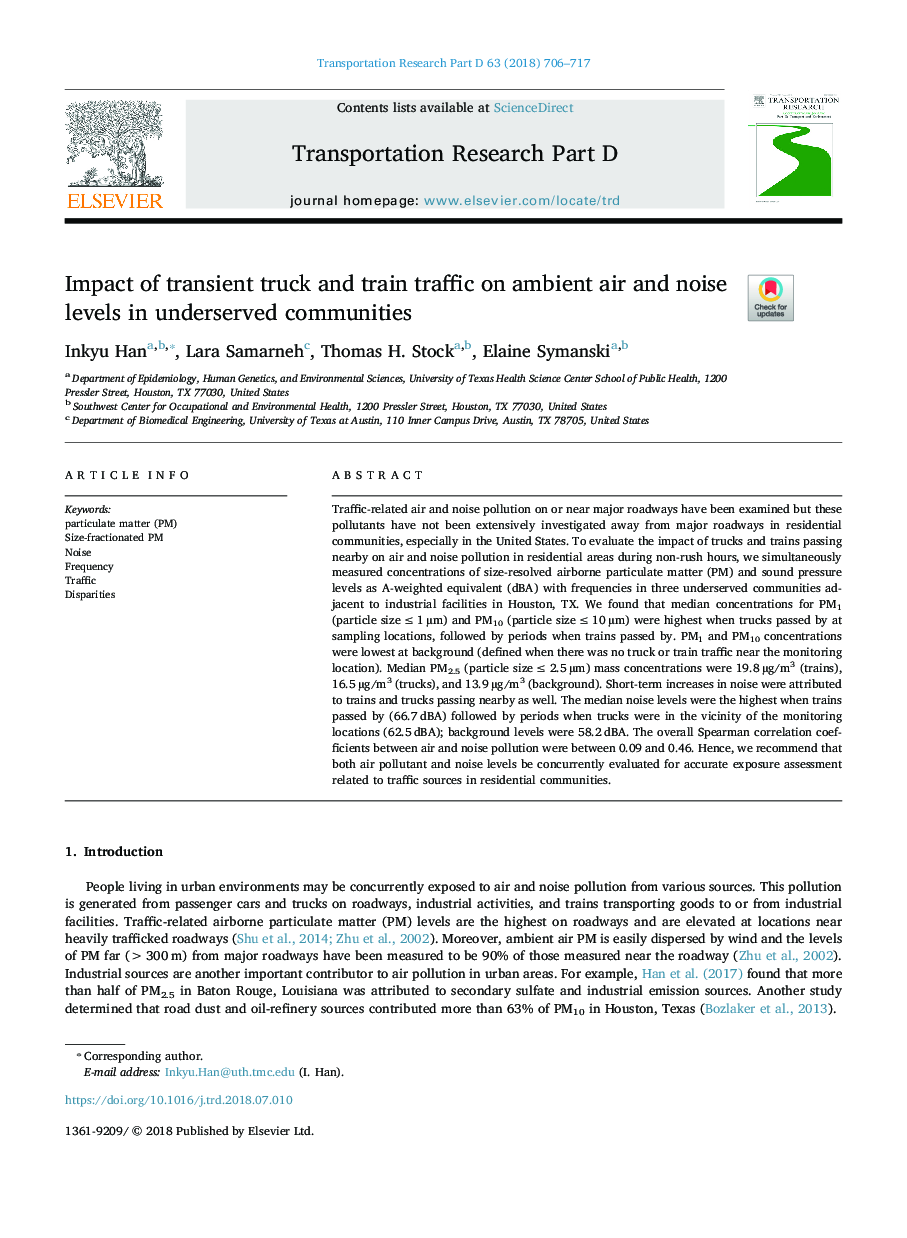| Article ID | Journal | Published Year | Pages | File Type |
|---|---|---|---|---|
| 7498591 | Transportation Research Part D: Transport and Environment | 2018 | 12 Pages |
Abstract
Traffic-related air and noise pollution on or near major roadways have been examined but these pollutants have not been extensively investigated away from major roadways in residential communities, especially in the United States. To evaluate the impact of trucks and trains passing nearby on air and noise pollution in residential areas during non-rush hours, we simultaneously measured concentrations of size-resolved airborne particulate matter (PM) and sound pressure levels as A-weighted equivalent (dBA) with frequencies in three underserved communities adjacent to industrial facilities in Houston, TX. We found that median concentrations for PM1 (particle sizeâ¯â¤â¯1â¯Âµm) and PM10 (particle sizeâ¯â¤â¯10â¯Âµm) were highest when trucks passed by at sampling locations, followed by periods when trains passed by. PM1 and PM10 concentrations were lowest at background (defined when there was no truck or train traffic near the monitoring location). Median PM2.5 (particle sizeâ¯â¤â¯2.5â¯Âµm) mass concentrations were 19.8â¯Âµg/m3 (trains), 16.5â¯Âµg/m3 (trucks), and 13.9â¯Âµg/m3 (background). Short-term increases in noise were attributed to trains and trucks passing nearby as well. The median noise levels were the highest when trains passed by (66.7â¯dBA) followed by periods when trucks were in the vicinity of the monitoring locations (62.5â¯dBA); background levels were 58.2â¯dBA. The overall Spearman correlation coefficients between air and noise pollution were between 0.09 and 0.46. Hence, we recommend that both air pollutant and noise levels be concurrently evaluated for accurate exposure assessment related to traffic sources in residential communities.
Related Topics
Life Sciences
Environmental Science
Environmental Science (General)
Authors
Inkyu Han, Lara Samarneh, Thomas H. Stock, Elaine Symanski,
